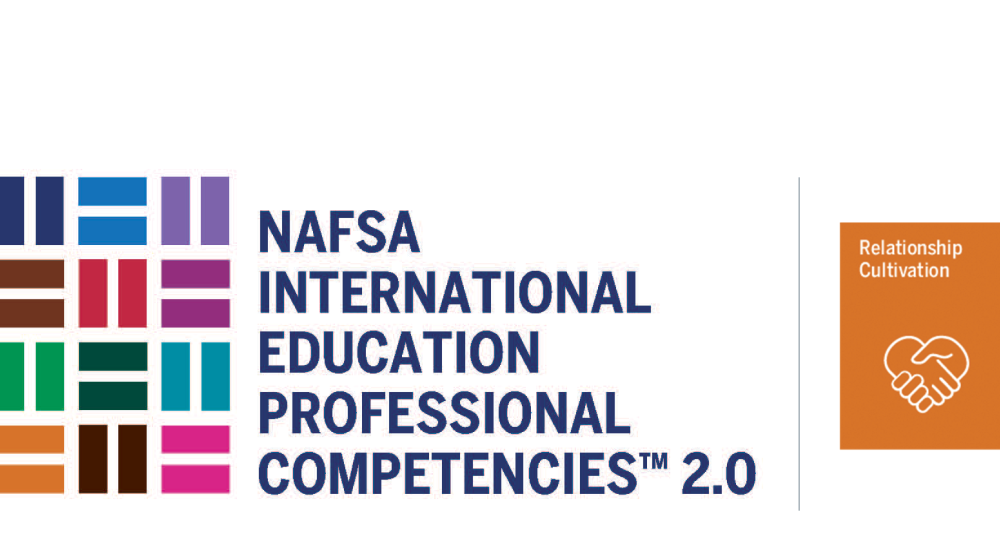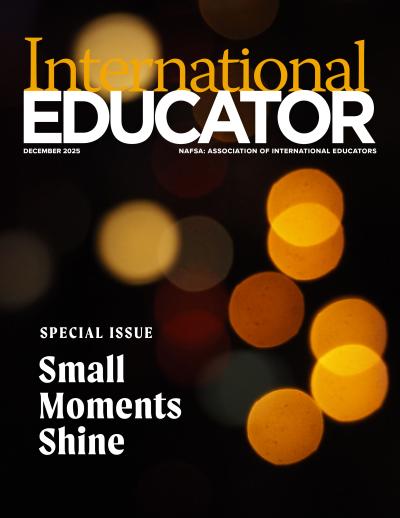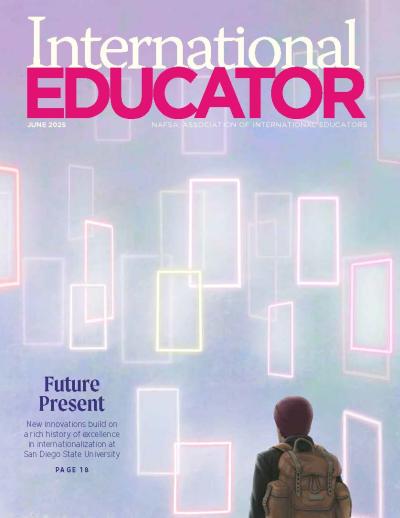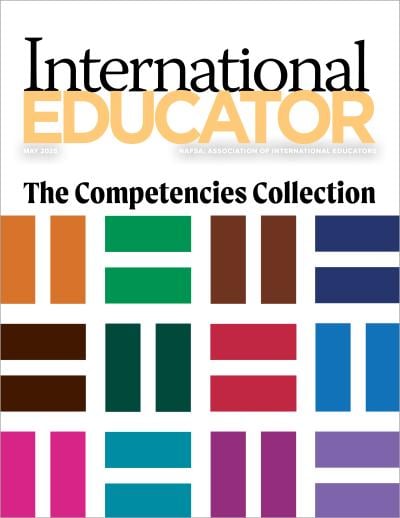Bridging Policy and Practice: How ISSS Professionals Navigate Government Partnerships

For international student and scholar services (ISSS) professionals, collaboration with U.S. government agencies is an essential part of supporting international students, scholars, and employees. From processing delays and unclear guidance to changing regulations, this work requires a balance of compliance, advocacy, and creative problem-solving. The challenges can be complex, but success lies in patience, preparation, and partnership.
Understanding the Core Challenges
ISSS professionals routinely interact with a range of government entities, including U.S. Citizenship and Immigration Services (USCIS), the Department of State, Customs and Border Protection (CBP), and the Student and Exchange Visitor Program (SEVP). Each has distinct procedures and communication protocols, adding complexity to ISSS workflows and processes.
One of the most common challenges we face is understanding and applying rules to situations that regulations or processes do not actually address—or when regulations haven't kept up with changing times. —Linda Gentile
As Basim Kamal, senior associate at Fragomen, Del Rey, Bernsen & Loewy, LLP, explains, "Common challenges include understanding why USCIS processing might be delayed or why an individual remains in lengthy administrative processing for a visa appointment with the Department of State."
He also notes the importance of understanding boundaries and responsibilities: "It is critical to know and understand the fine line between providing ISSS support and providing immigration legal advice, [a distinction] which can often be challenging."
Sometimes we are sent back and forth between agencies [when] trying to get something resolved, and it feels like we are communicating with the agencies better than they communicate between themselves. —Theresa Johnson
Linda Gentile, executive director of international education at Carnegie Mellon University, points to another layer of complexity: "One of the most common challenges we face is understanding and applying rules to situations that regulations or processes do not actually address—or when regulations haven't kept up with changing times."
She adds that rapid shifts in policy and uncertainty about forthcoming changes can be stressful for both advisers and the students they serve. "The inability to give concrete advice and information can be stressful for students, scholars, and advisers alike."
For Theresa Johnson, director of international student and scholar services at the University of Denver, even routine processes can become complicated. "Getting information from U.S. government agencies can be difficult at times," she says. "Sometimes we are sent back and forth between agencies [when] trying to get something resolved, and it feels like we are communicating with the agencies better than they communicate between themselves."
A Mindset for Success
In navigating these challenges, experts agree that maintaining a calm, proactive, and solutions-oriented mindset is key.
The people who are writing these regulations, policies, and memos are just that—they're people trying to do their job based on the knowledge and experience they have and the task they've been given. —Linda Gentile
Kamal advises remembering that "most issues that ISSS professionals handle are fixable." He recommends being proactive—establishing clear policies, documenting procedures, and ensuring consistent communication with institutional stakeholders. "What works for one individual might not work for another, and governmental discretion is not always predictable," he says.
Gentile argues that understanding how policy is made helps set reasonable expectations, and that empathy is key. "The people who are writing these regulations, policies, and memos are just that—they're people trying to do their job based on the knowledge and experience they have and the task they've been given," she says.
"As international educators, we can play a role in educating not only our students and scholars but also government officials and agencies about our institutions and the mechanics of how things work in a changing landscape."
Johnson echoes the need for patience. "Whether it's listening to SEVP help desk hold music or navigating the USCIS phone tree, knowing that I should set aside time to make a call to a government agency makes the time feel less stressful," she shares. "Patience goes a long way."
Best Practices for Navigating Government Partnerships
Building on this solutions-oriented mindset, experienced professionals recognize that while no two cases are the same, there are key strategies that can help ISSS staff manage relationships with government agencies more effectively.
For Kamal, leaning on professional networks and institutional support is vital. "Almost always, someone else has dealt with the same challenge before," he says. "It's important to lean on your colleagues across the NAFSA ISSS network in the United States. Outside immigration counsel can also play an important role in unique situations, particularly when there is institutional risk."
Gentile emphasizes the importance of preparation and research. "Review information carefully; ask questions and gather additional information if necessary," she says. "Build a network of resources and create documentation about policies and practices related to . . .the grayer areas."
She adds that outreach to local agencies—such as CBP, the Social Security Administration (SSA), or the Department of Motor Vehicles—can strengthen working relationships. However, she cautions that outreach should always be preceded by detailed preparation: "Do not ask a policy question if you haven't first researched the question thoroughly."
Almost always, someone else has dealt with the same challenge before," he says. "It's important to lean on your colleagues across the NAFSA ISSS network in the United States. —Basim Kamal
Johnson agrees that clear, detailed communication is key. "I do my best to ensure that I provide full details of the situation and my 'ask' when I am communicating with a government agency," she says. "This helps avoid delays caused by [requests for evidence] or other follow-ups and ensures accuracy on the part of the agency."
Problem-Solving in Practice
Despite the challenges, experts agree that proactive communication and persistence can lead to successful outcomes.
The upside of having the same issues year-to-year is that we have a process in place. It doesn't take much brain power to resolve. —Theresa Johnson
Kamal notes that "emailing consulates directly can be beneficial when trying to secure earlier or expedited appointments," while "calling USCIS or emailing the premium processing team can help overturn a denial or a request for resubmission of documentation." For long delays, he's found that "engaging directly with [one's member of Congress] can help get cases 'unstuck.'"
Johnson's team has developed repeatable systems to handle recurring issues, such as SEVIS data fixes or corrections to employment authorization document cards and H-1B approval notices. "The upside of having the same issues year-to-year is that we have a process in place," she says. "It doesn't take much brain power to resolve."
Gentile notes that ISSS professionals have witnessed dramatic shifts in the immigration environment—from the aftermath of September 11, 2001, to the COVID-19 pandemic—demonstrating that resilience, adaptability, and careful communication are key to navigating change and complexity.
"It's important to pay attention to actual as well as proposed changes and communicate with campus stakeholders to educate and advocate," she says. "But overloading people with what may happen is probably not helpful—be thoughtful in how, what, and when you communicate."
Building Lasting Partnerships
Above all, experts emphasize the importance of maintaining professionalism and collaboration with government officials. Kamal notes that "working with government agencies is a partnership," and that remaining "respectful and courteous" helps foster mutual trust.
We advise our students to follow the rules—that pertains to advisers as well. But also, take a deep breath and try to find peace amid these challenging times. —Linda Gentile
Gentile adds that ISSS professionals can amplify their impact by engaging in advocacy—through NAFSA's IssueNet, the Connecting Our World newsletter, in comment letters on proposed rules, or via direct outreach to representatives.
Johnson underscores the importance of relationship-building: "If I know the name of a staff member at CBP, SSA, etc., it makes calling the office for assistance far easier."
In a landscape defined by complexity and constant change, ISSS professionals play a critical role in helping institutions and individuals navigate uncertainty with clarity and care. As Gentile puts it, "We advise our students to follow the rules—that pertains to advisers as well. But also, take a deep breath and try to find peace amid these challenging times." •
NAFSA Resources
About International Educator
International Educator is NAFSA’s flagship publication and has been published continually since 1990. As a record of the association and the field of international education, IE includes articles on a variety of topics, trends, and issues facing NAFSA members and their work.
From in-depth features to interviews with thought leaders and columns tailored to NAFSA’s knowledge communities, IE provides must-read context and analysis to those working around the globe to advance international education and exchange.
About NAFSA
NAFSA: Association of International Educators is the world's largest nonprofit association dedicated to international education and exchange. NAFSA serves the needs of more than 10,000 members and international educators worldwide at more than 3,500 institutions, in over 150 countries.
NAFSA membership provides you with unmatched access to best-in-class programs, critical updates, and resources to professionalize your practice. Members gain unrivaled opportunities to partner with experienced international education leaders.














